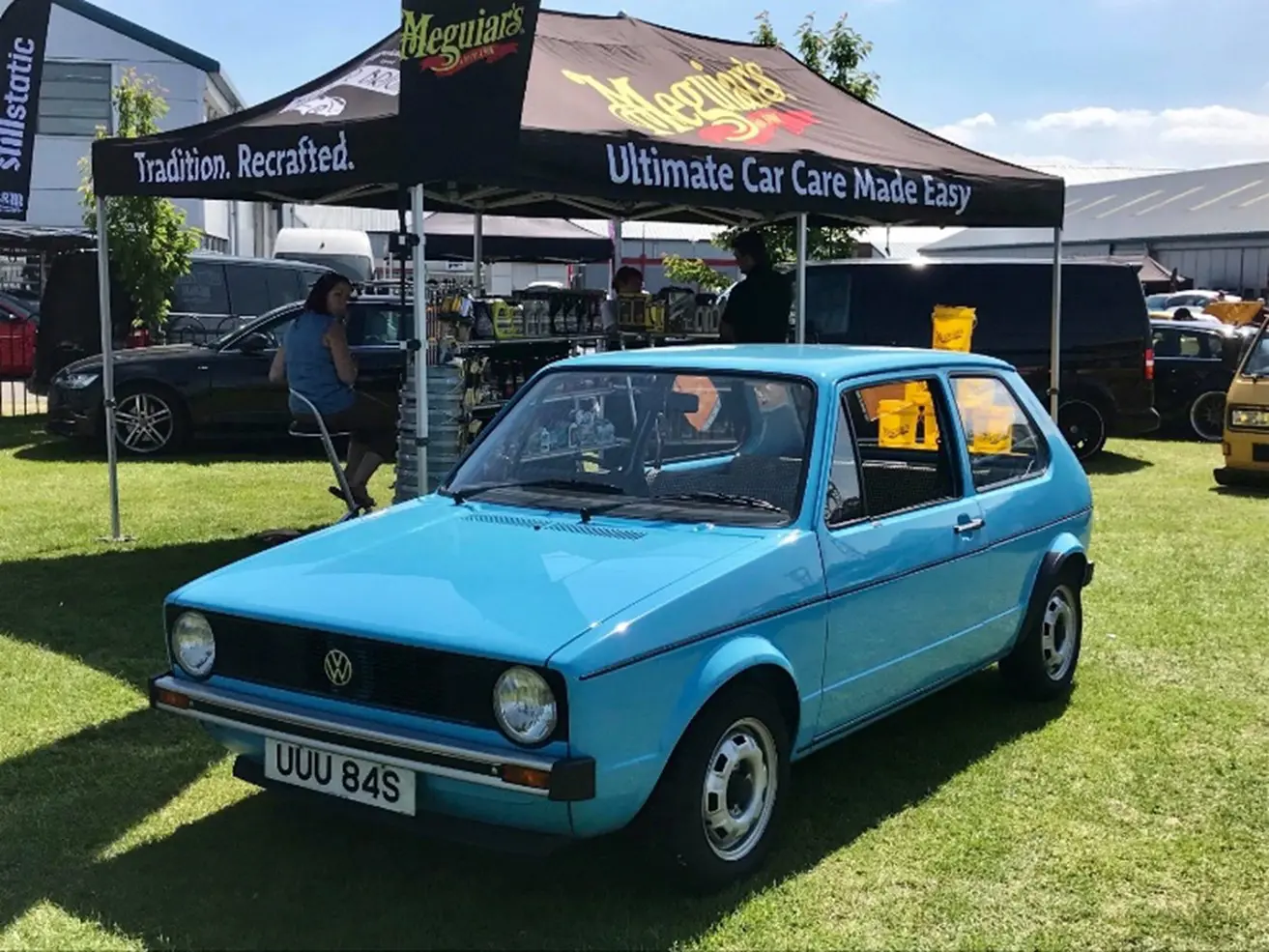The Volkswagen Golf at 50 by Andrew Roberts
30 April 2024
Dale Smith’s VW Golf N is a VIC—Very Important Car. Firstly, it reminds us that the GTi Mk1 was never a common sight on British roads during the late 1970s; it was not sold in right-hand-drive form until July 1979. Instead, you were far more likely to encounter the likes of the N. Secondly, the Golf will be fifty years old in May; it is no exaggeration to say it transformed Volkswagen’s image.

From a 2024 perspective, it is bizarre to think that only five years before the Golf’s launch, VW was entirely associated with rear-engine air-cooled cars. However, on the 13th of May of that year, the company re-assessed its plans, and by March 1970, it initiated an FWD project, code-named EA 337. 1970 also marked the debut of the K70, originally an NSU design and the first FWD car to wear the Volkswagen badge. As for EA 337’s styling, the Ital Design website states:
“The German management then asked its Italian importer, Gerhard R. Guempert, to indicate the best car designer, the one able to design a new project for a C segment car. During the 1969 Turin Motor Show, helped by some journalists, Gumpert identifies six cars that he considers the most interesting of the show. Four of these wear the mark of Giorgetto Giugiaro and Volkswagen decides then to assign to Giorgetto Giugiaro the design of the Golf.”
Production of the Golf began in March 1974, with the first examples arriving at VW dealerships in May. By then, Volkswagen sales teams had experience of marketing the FWD K70, the Passat and the Scirocco, but the EA 337 had the weight of expectation of being the heir to the Beetle. However, Autocar’s review from the 1st of June 1974 - “Golf is one of the rare cars that feels right the moment you get it” - must have pleased Wolfsburg’s senior managers. Even if one early television/cinema commercial was decidedly odd -
Some traditionalists followed the line of Bill Boddy of Motor Sport: “a nice little car but one lacking any individuality that would establish it in my mind as a Volkswagen rather than another variant of Audi.” However, such views did not prevent the Golf from becoming the best-selling car in the former West Germany by the end of 1974.
VW first sold the Golf with Audi-designed 1.1- and 1.5-litre units. The prices of the first UK-market versions ranged from £1,294 for the two-door 1100 and £1,410 for the four-door 1100 to £1,654 for the 1500. Autocar continued to be impressed, describing the Golf as “a very strong contender in its class”. Even Mr. Boddy wrote about his 1500 LS test car: “I am in danger of returning to something of the old VW fanaticism of which I am sometimes still accused”.
By 1976, VW had sold half a million Golfs, and when European production of the Mk1 version ceased at the end of 1983, more than six million had left the factory. Dale’s Golf is the entry-level N version and dates from 1977. The price was £2,487, which, according to Volkswagen, at least gave the owner “all the basic equipment—by which we mean all the equipment you really need.”
Dale has been a VW devotee for many years, and he bought his Golf from a friend in 2007. At that time, it had just 40,000 miles on the clock. Since then, Dale embarked on a major restoration, with new paneling and a bare metal respray. More recently, the Miami Blue N has turned heads at the NEC, and Corgi even immortalised it in die-cast form.
And after seeing Dale’s Golf, who could disagree with the brochure’s claim of “timeless good looks”?
With Thanks to: Dale Smith
